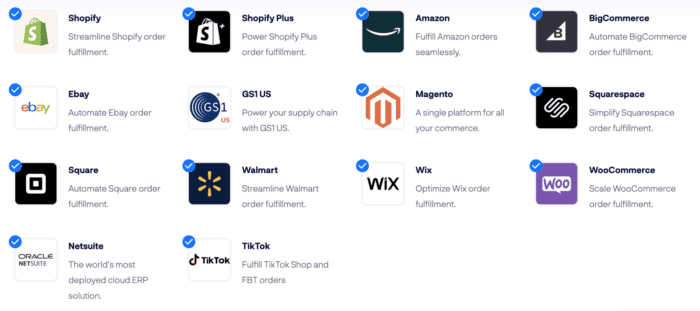Mastering Multi-Channel Fulfillment: A Comprehensive Guide to Setting Up Multi-Channel Fulfillment for Orders from Non-Amazon Channels

In the dynamic world of e-commerce, expanding beyond a single sales channel opens up new opportunities for sellers to reach customers and grow their business. While Amazon remains a dominant force in the online marketplace, many sellers also sell through their own websites, third-party platforms, and other non-Amazon channels. Managing fulfillment across multiple channels can be complex and time-consuming, but Amazon’s Multi-Channel Fulfillment (MCF) service offers a solution. In this extensive guide, we’ll explore the intricacies of setting up multi-channel fulfillment for orders from non-Amazon channels, providing detailed explanations, practical strategies, and valuable insights to help sellers streamline their fulfillment operations and maximize efficiency across all sales channels.
Understanding Multi-Channel Fulfillment
Before delving into the specifics of setting up multi-channel fulfillment, it’s crucial to understand what it entails and why it matters:
- Centralized Fulfillment: Multi-Channel Fulfillment allows sellers to leverage Amazon’s extensive fulfillment network to fulfill orders from non-Amazon channels, consolidating fulfillment operations and streamlining logistics.
- Scalability: MCF enables sellers to scale their business across multiple sales channels without the need for additional infrastructure or resources, allowing for seamless expansion and growth.
- Cost-Effectiveness: By outsourcing fulfillment to Amazon, sellers can benefit from economies of scale and cost-effective shipping rates, reducing fulfillment costs and improving profit margins.
Key Features of Multi-Channel Fulfillment
Amazon’s Multi-Channel Fulfillment service offers a range of features and benefits for sellers:
- Inventory Management: MCF provides centralized inventory management, allowing sellers to track inventory levels, manage stockouts, and forecast demand across all sales channels.
- Fast and Reliable Shipping: Leveraging Amazon’s extensive fulfillment network, MCF offers fast and reliable shipping options for orders from non-Amazon channels, including two-day and next-day delivery options.
- Order Tracking and Updates: MCF provides real-time order tracking and updates, allowing sellers and customers to monitor the status of their orders and receive notifications throughout the fulfillment process.
- Customer Service Support: MCF offers dedicated customer service support to assist sellers with any questions or issues related to order fulfillment, ensuring a seamless experience for both sellers and customers.
Setting Up Multi-Channel Fulfillment
Setting up multi-channel fulfillment for orders from non-Amazon channels is a straightforward process:
- Enroll in Multi-Channel Fulfillment: Log in to your Amazon Seller Central account and enroll in the Multi-Channel Fulfillment service.
- Upload Inventory: Upload your inventory to Amazon’s fulfillment network, either through Seller Central or by integrating your non-Amazon channels with Amazon’s APIs.
- Configure Shipping Settings: Set up shipping settings and preferences for your multi-channel orders, including shipping methods, delivery options, and shipping rates.
- Sync Orders: Sync orders from your non-Amazon channels with Amazon’s Multi-Channel Fulfillment service, ensuring that all orders are processed and fulfilled in a timely manner.
- Monitor Performance: Monitor the performance of your multi-channel fulfillment operations using Amazon’s reporting tools and analytics dashboard, tracking metrics such as order fulfillment rates, shipping times, and customer satisfaction.
Best Practices for Multi-Channel Fulfillment
To maximize the benefits of multi-channel fulfillment and ensure a seamless experience for both sellers and customers, consider implementing the following best practices:
- Optimize Inventory Management: Keep inventory levels updated and synchronized across all sales channels to prevent stockouts and minimize fulfillment delays.
- Streamline Order Processing: Automate order processing and fulfillment wherever possible, using tools and integrations to streamline workflows and minimize manual intervention.
- Provide Excellent Customer Service: Offer excellent customer service and support to customers across all sales channels, including timely communication, responsive support, and proactive issue resolution.
- Monitor Performance and Iterate: Continuously monitor the performance of your multi-channel fulfillment operations and iterate based on feedback and data insights to optimize efficiency and improve customer satisfaction.
Conclusion
Multi-Channel Fulfillment offers sellers a powerful solution for managing fulfillment across multiple sales channels and streamlining logistics operations. By understanding the key features and benefits of MCF, setting up multi-channel fulfillment for orders from non-Amazon channels, and implementing best practices for efficiency and customer satisfaction, sellers can unlock new opportunities for growth and success in the global marketplace. So don’t miss out on the opportunity to streamline your fulfillment operations and maximize efficiency across all sales channels. Start setting up multi-channel fulfillment today and take your e-commerce business to new heights.




